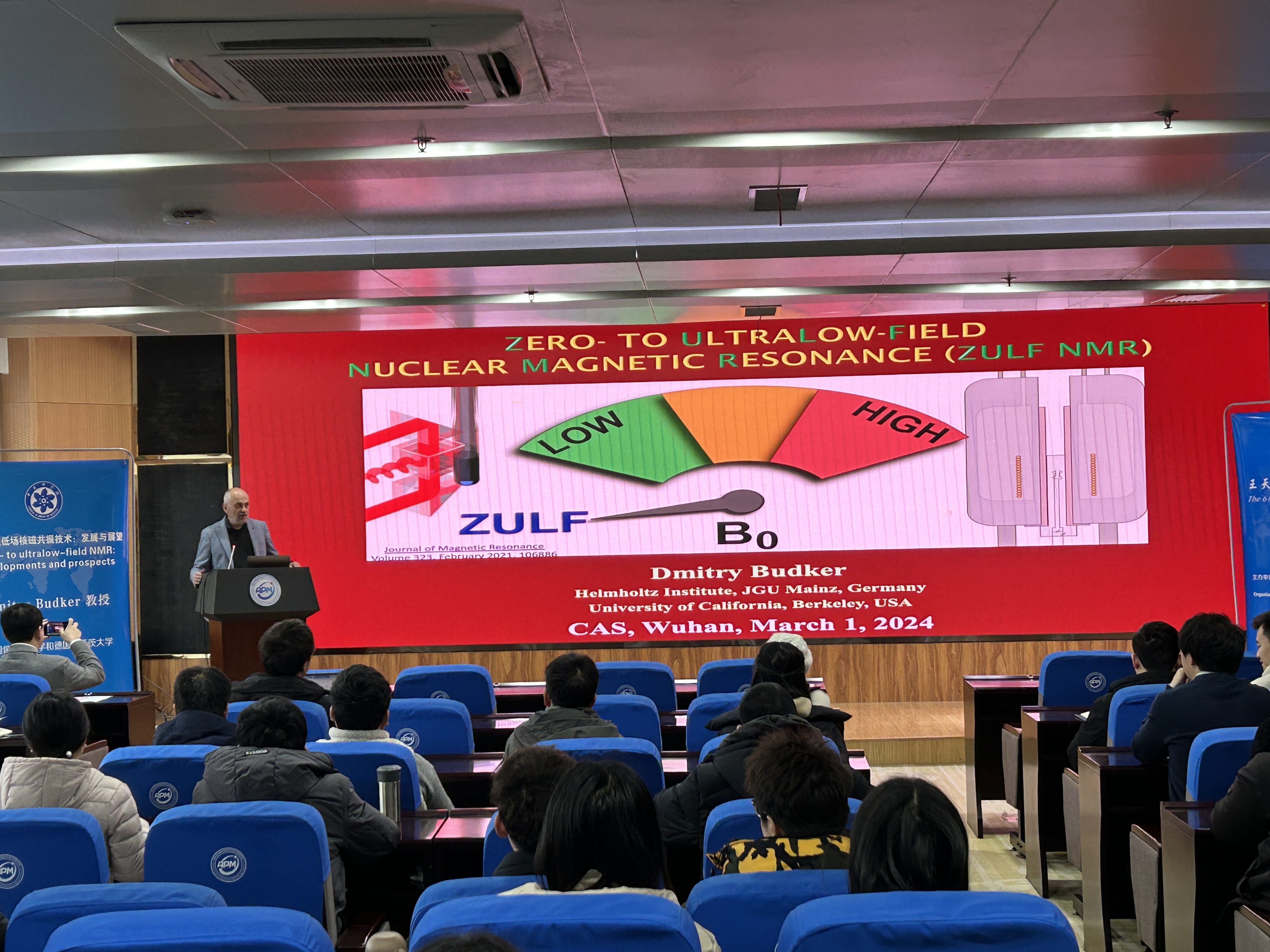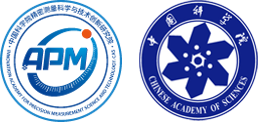

Professor Dmitry Budker from Johannes Gutenberg University of Mainz and University of California, Berkeley Visited APM
On March 1, 2024, the Innovation Academy for Precision Measurement Science and Technology (APM) of Chinese Academy of Sciences held the 61th lecture in the " Session of Wang T.C. Lecture". Professor Dmitry Budker was invited and gave a lecture entitled "Zero- to Ultralow-field NMR: developments and prospects". The lecture was hosted by senior engineer Yinan Hu, and Dean Prof. Xin Zhou presented Prof. Budker with the appointment letter and nameplate of the "Wang T. C. Forum Professorship".
Prof. Dmitry Budker has been on the faculty of Department of Physics, University of California, Berkeley since 1995. From 2014, he is a University Professor at the Johannes Gutenberg University and a Matter-Antimatter Section Leader of the Helmholtz Institute in Mainz, Germany. He is a Fellow of the American Physical Society, a recipient of the 2021 Norman F. Ramsey Prize in Atomic, Molecular and Optical Physics and in Precision Tests of Fundamental Laws and Symmetries, and a co-recipient of the 2021 Erwin Schrödinger Award of the Helmholtz Association for his work in nuclear magnetic resonance. Current research is focused on testing fundamental symmetries of nature in experiments that utilize the methods of atomic, molecular, and optical physics, including development of all-optical sensors based on atomic vapors and color centers in diamond, zero- and ultralow-field nuclear magnetic resonance (ZULF-NMR), searches for dark matter and dark energy constituents (GNOME, CASPEr), physics of sodium laser guide stars, and measurement of atomic parity violation and other symmetry tests in atoms, molecules and ions.
In the lecture, Prof. Budker introduced the basic principles and background of ZULF NMR, and discussed several recent ZULF NMR experiments carried out by his group and collaborators, demonstrating applications in areas as diverse as searches for beyond-the-standard-model particles and interactions, monitoring chemical reaction dynamics in highly inhomogeneous samples within metal catalytic reactors, and detection of breaking down of membranes of biological cells as a result of chemotherapy. He highlighted ZULF NMR may be combined with hyperpolarization and radioactive detection overcoming the sensitivity limitations.
After the lecture, Prof. Budker visited the Zero to Ultra-Low Field NMR laboratory and the 1.5T, 3T, 9.4T MRI laboratories.


Innovation Academy for Precision Measurement Science and Technology, CAS.
West No.30 Xiao Hong Shan, Wuhan 430071 China
Tel:+86-27-8719-8631 Fax:+86-27-8719-9291
Email:hanyeqing@wipm.ac.cn
鄂ICP备15017570号-1